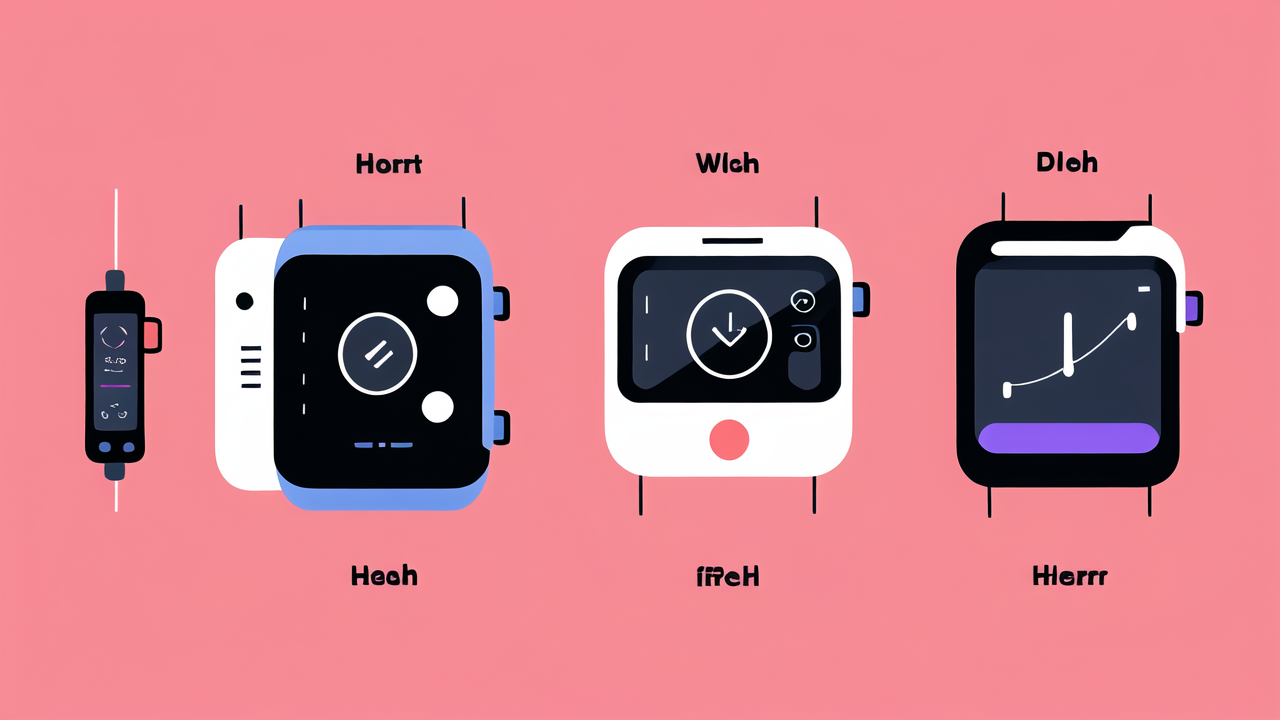The Evolution of Smart Bracelets in Health Care
The Early Days of Wearable Fitness Technology
Smart bracelets have come a long way since their inception. In the early days, these devices were simple step counters. They tracked basic metrics like steps taken and calories burned. The first models were bulky and had limited features. They often required manual syncing with computers to view data.

As technology advanced, so did smart bracelets. They became sleeker and more user-friendly. Manufacturers added new sensors to track more health metrics. Heart rate monitoring became a standard feature. This allowed users to get a more complete picture of their fitness levels.
The early smart bracelets paved the way for today's advanced wearables. They showed that people were interested in tracking their health data. This interest drove further innovation in the field.
Integrating Smart Bracelets with Health Apps and Platforms
The next big leap for smart bracelets was integration with health apps and platforms. This allowed users to view their data in more meaningful ways. Apps could show trends over time and provide insights based on the data collected.
Many smart bracelets now sync with popular fitness apps. These include MyFitnessPal, Strava, and Apple Health. This integration makes it easy for users to track their overall health. They can see how their activity levels affect their weight, sleep, and other health metrics.
Some health insurance companies have started offering incentives for using smart bracelets. They use the data to encourage healthier lifestyles among their customers. This has further increased the adoption of these devices.
Recent Advancements in Smart Bracelet Features
Today's smart bracelets are packed with advanced features. Many can now track sleep patterns, stress levels, and even blood oxygen levels. Some models can detect irregular heart rhythms, potentially alerting users to serious health issues.
Waterproof designs have made it possible to track swimming activities. GPS capabilities allow for accurate tracking of outdoor workouts. Some smart bracelets can even make payments or control smart home devices.
Battery life has also improved significantly. Many models can now last a week or more on a single charge. This makes it easier for users to wear their devices continuously, collecting more comprehensive data.
Impact of Smart Bracelets on Consumer Health Behavior
Encouraging Regular Exercise and Monitoring
Smart bracelets have had a significant impact on encouraging regular exercise. Many devices have features that remind users to move if they've been inactive for too long. This can help combat the negative effects of a sedentary lifestyle.

The ability to set and track fitness goals has motivated many users to be more active. Seeing progress towards these goals can be a powerful motivator. Some devices even offer virtual rewards or badges for reaching milestones.
Many smart bracelets also allow users to compete with friends or join challenges. This social aspect can make exercise more fun and engaging. It can provide extra motivation to stay active and reach fitness goals.
Personalized Health Coaching and Data Analysis
Advanced smart bracelets now offer personalized health coaching based on collected data. They can suggest workout routines tailored to the user's fitness level and goals. Some can even provide real-time guidance during workouts.
These devices can analyze trends in health data over time. This can help users identify patterns in their sleep, stress levels, or activity. With this information, users can make informed decisions about their health habits.
Some smart bracelets integrate with nutrition tracking apps. This allows users to see how their diet affects their overall health and fitness. It can help them make better food choices and understand their calorie needs.
Addressing Mental Health Issues with Wearable Devices
Smart bracelets are increasingly being used to address mental health issues. Many devices now include features for stress tracking and management. They may use heart rate variability to detect stress levels and suggest relaxation exercises.
Some smart bracelets offer guided breathing exercises or meditation sessions. These can help users manage stress and anxiety throughout the day. The devices can remind users to take breaks and practice mindfulness.
Sleep tracking features can also contribute to mental health. Poor sleep is often linked to mental health issues. By helping users improve their sleep habits, smart bracelets can indirectly support better mental health.
Future Perspectives: Trends and Predictions in Smart Bracelet Health
The Integration of AI and Machine Learning in Wearable Technology
The future of smart bracelets lies in AI and machine learning. These technologies will allow devices to provide more accurate and personalized health insights. They could potentially detect health issues before symptoms appear.

AI could analyze data from multiple sensors to provide a more holistic view of health. It might be able to predict things like the onset of illness based on subtle changes in vital signs. This could allow for earlier intervention and better health outcomes.
Machine learning algorithms could adapt to each user's unique patterns. This would allow for more accurate tracking and predictions. It could also help filter out false alarms and provide more reliable health alerts.
Privacy Concerns and Ethical Considerations in Health Data
As smart bracelets collect more sensitive health data, privacy concerns are growing. Users are rightfully concerned about who has access to their health information. There are also worries about how this data might be used by insurance companies or employers.
Manufacturers are working to address these concerns with improved security measures. Many now offer end-to-end encryption for data transfer and storage. Some allow users to control what data is shared and with whom.
There are also ethical considerations around the use of health data. Should insurance rates be based on smart bracelet data? How can we ensure that this technology doesn't create new forms of discrimination? These are questions that will need to be addressed.
The Role of Smart Bracelets in Preventive Health Care
Smart bracelets are set to play a bigger role in preventive health care. By continuously monitoring vital signs, they could help detect potential health issues early. This could lead to earlier interventions and better health outcomes.
Some researchers are exploring the use of smart bracelets in managing chronic conditions. They could help monitor symptoms and medication adherence. This could improve treatment effectiveness and reduce healthcare costs.
In the future, smart bracelets might even be able to detect the early signs of diseases like diabetes or heart disease. This could revolutionize preventive health care, allowing for earlier and more effective interventions.




Leave a comment
This site is protected by hCaptcha and the hCaptcha Privacy Policy and Terms of Service apply.